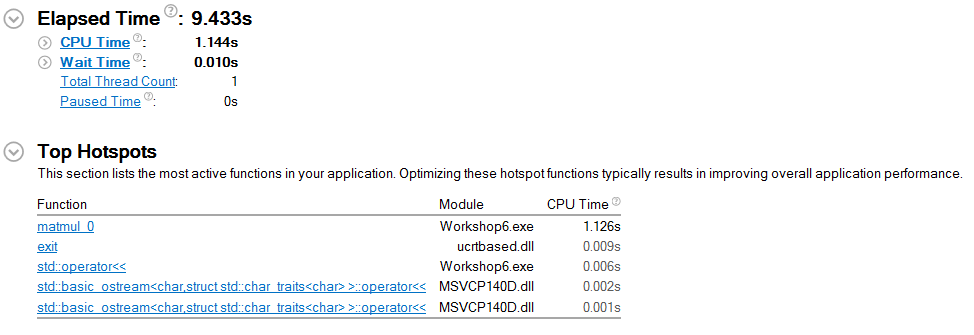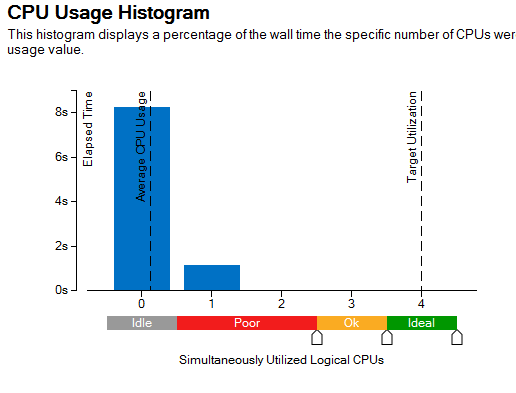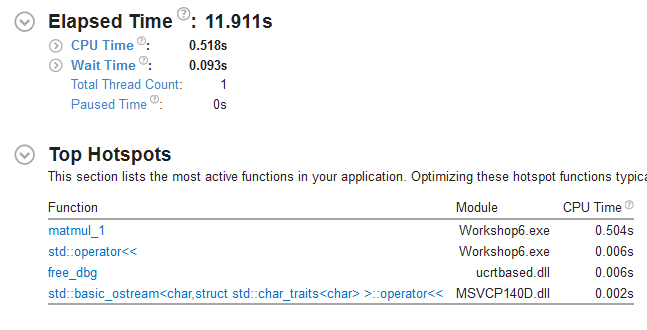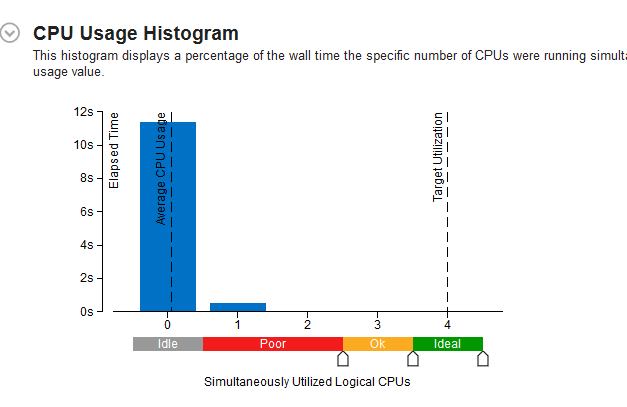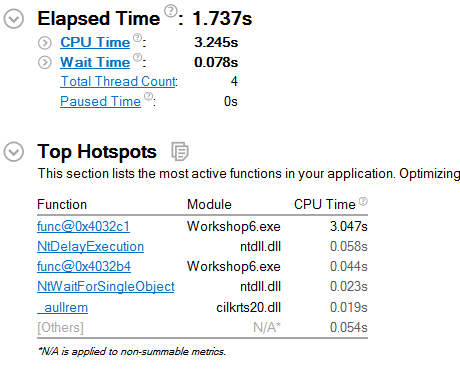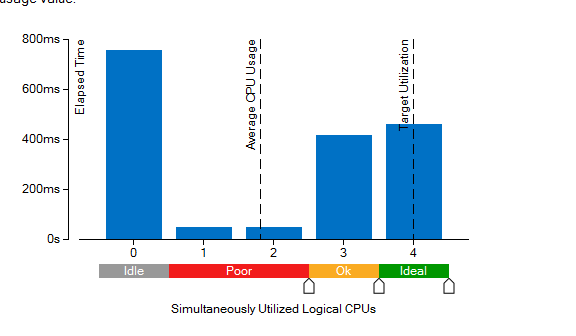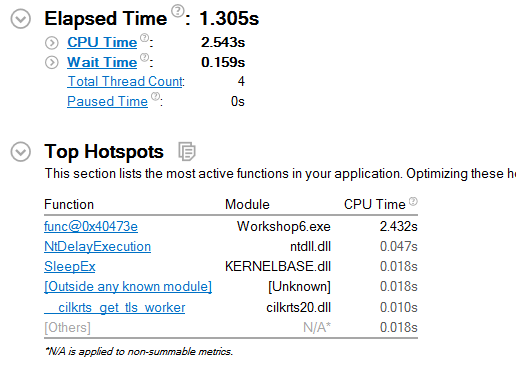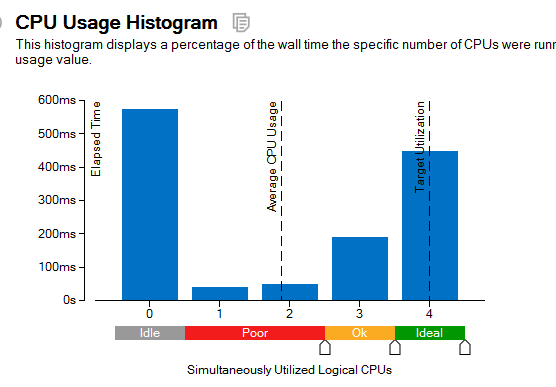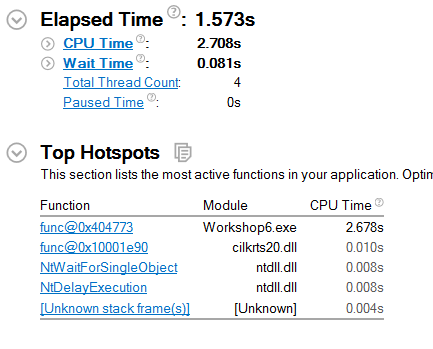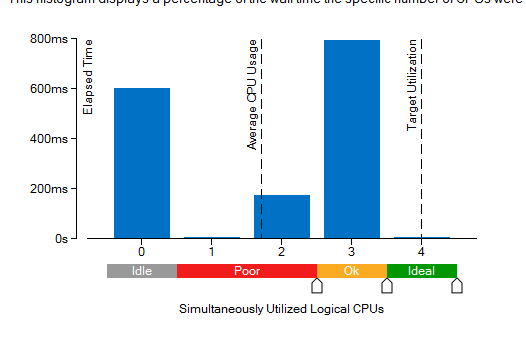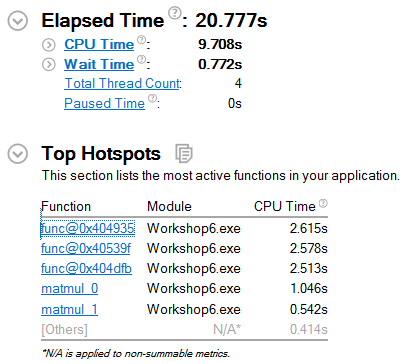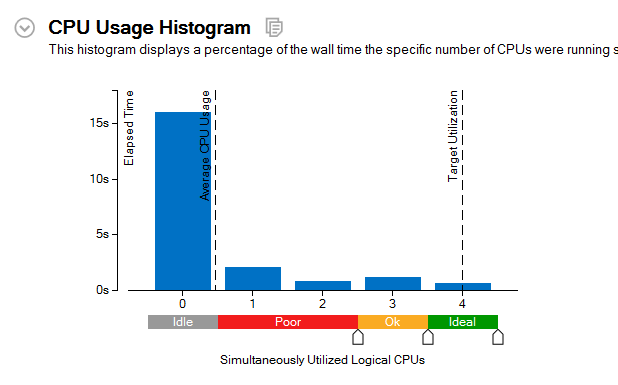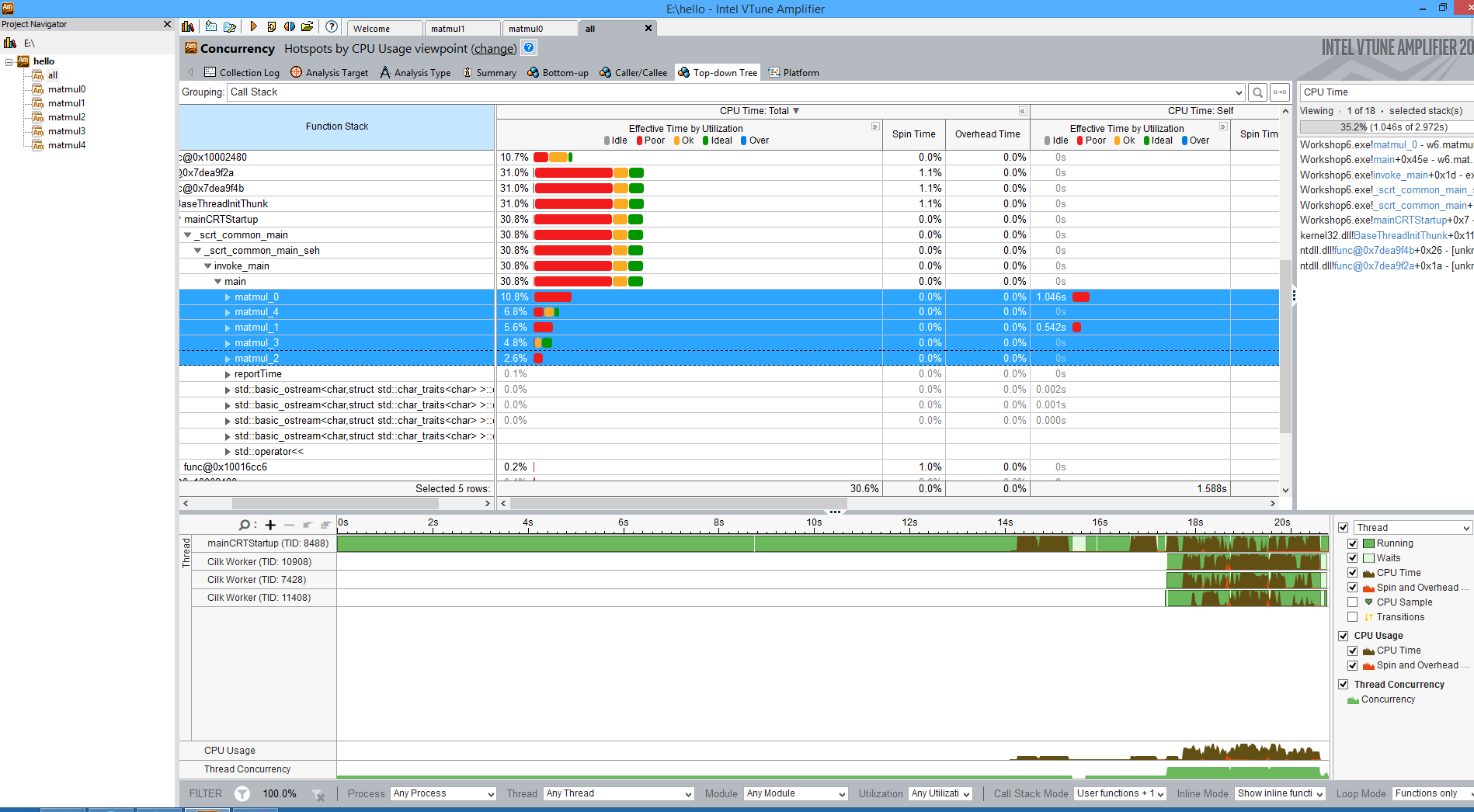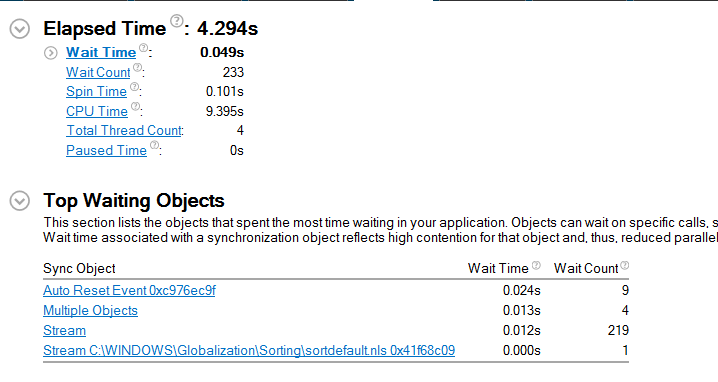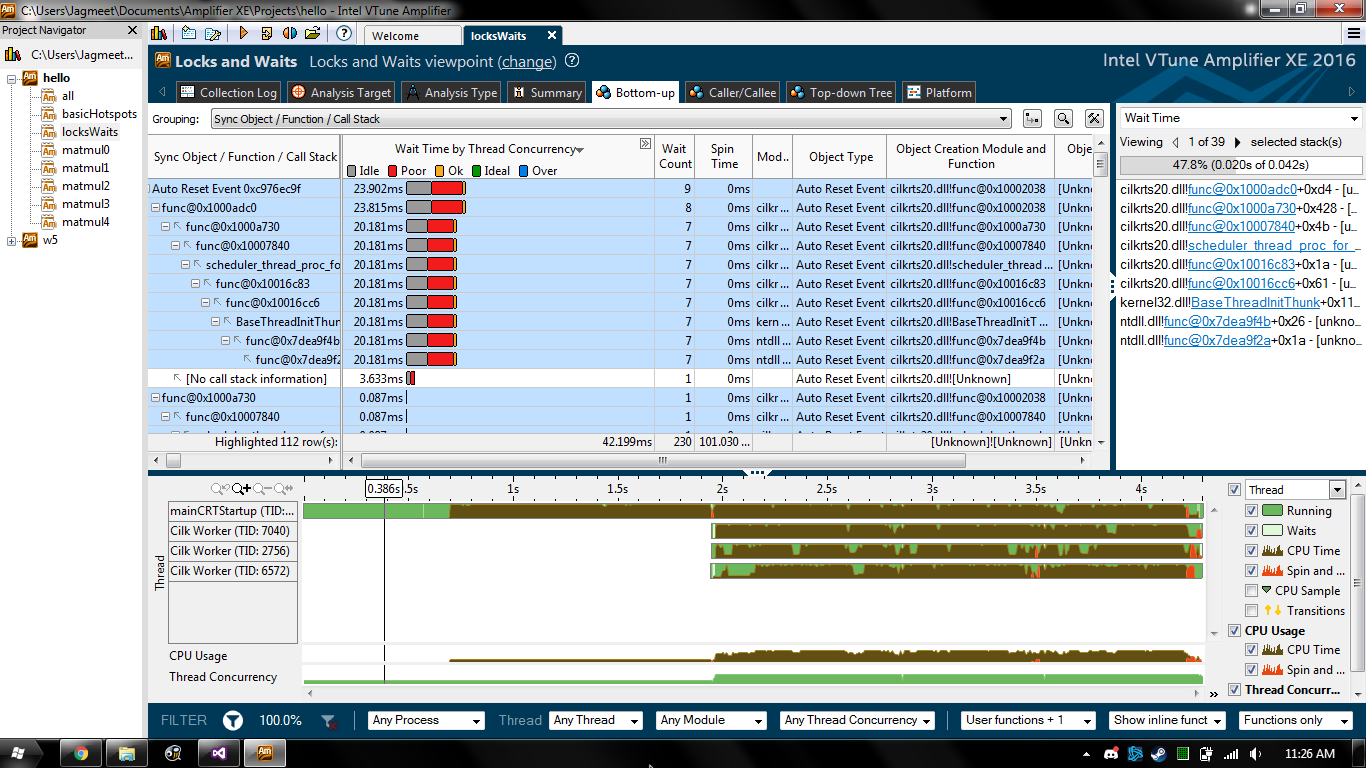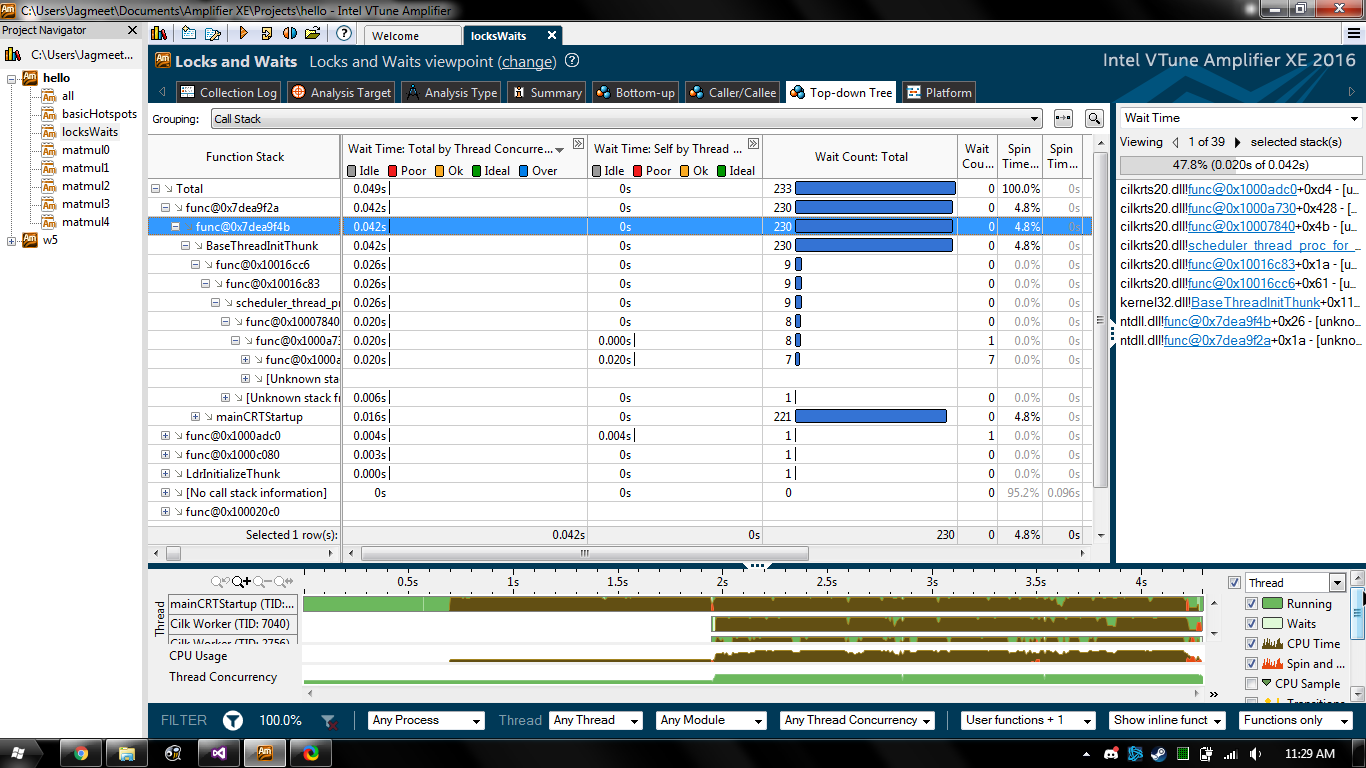Team Lion F2017
Contents
Group Members
Intel Parallel Studio vTune Amplifier
What is VTune Amplifier?
- A tool created by Intel to provide performance analysis on software.
- Offers both a GUI and command-line version for both Windows and Linux
- GUI only for OSX
- Basic features available on both Intel and AMD processors, but advanced features only for Intel
How to use it?
- Available as a standalone unit or part of the following packages:
- Intel Parallel Studio XE Cluster Edition and Professional Edition
- Intel Media Server Studio Professional Edition
- Intel System Studio
Can be run on a local machine
Hotspots
Basic hotspot analysis
We used our workshop 6 as an example to demonstrate this particular aspect of Intel Vtune Amplifer
the image above shows the timings for each function
matmul_0 - represents serial version
matmul_1 - represents serial version with reverse logic
matmul_2 - uses cilk_for
matmul_3 - uses cilk_for and reducer hyperboject
matmul_4 - uses cilk_for, reducer and vectorization
Advanced hotspot analysis
Parallelism
Concurrency
- Best for visualizing thread parallelism on available cores, finding areas with high or low concurrency, and identifying serial bottlenecks in your code
- Provides information on how many threads were running at each moment during application execution
- Includes threads which are currently running or ready to run and therefore are not waiting at a defined waiting or blocking API
- Also shows CPU time while the hotspot was executing and estimates its effectiveness either by CPU usage or by Threads Concurrency
Results of Concurrency tests on Workshop 6
I ran the Concurrency test on each of the functions in Workshop 6. I isolated each function by commenting out all others, then ran them 1 by 1. This was to get an idea of how they perform on their own. Finally I ran them all together to see how the program runs overall.
matmul_0 (Serial)
double matmul_0(const double* a, const double* b, double* c, int n) {
for (int i = 0; i < n; i++) {
for (int j = 0; j < n; j++) {
double sum = 0.0;
for (int k = 0; k < n; k++)
sum += a[i * n + k] * b[k * n + j];
c[i * n + j] = sum;
}
}
double diag = 0.0;
for (int i = 0; i < n; i++)
diag += c[i * n + i];
return diag;
}
matmul_1 (Serial with j-k loops reversed)
double matmul_1(const double* a, const double* b, double* c, int n) {
for (int i = 0; i < n; i++) {
for (int k = 0; k < n; k++) {
double sum = 0.0;
for (int j = 0; j < n; j++)
sum += a[i * n + k] * b[k * n + j];
c[i * n + k] = sum;
}
}
double diag = 0.0;
for (int i = 0; i < n; i++)
diag += c[i * n + i];
return diag;
}
matmul_2 (Cilk Plus with cilk_for)
double matmul_2(const double* a, const double* b, double* c, int n) {
cilk_for (int i = 0; i < n; i++) {
cilk_for (int j = 0; j < n; j++) {
double sum = 0.0;
for(int k = 0; k < n; k++) {
sum += a[i * n + k] * b[k * n + j];
}
c[i * n + j] = sum;
}
}
double diag = 0.0;
for (int i = 0; i < n; i++)
diag += c[i * n + i];
return diag;
}
matmul_3 (+array notation, reducer)
double matmul_3(const double* a, const double* b, double* c, int n) {
cilk_for(int i = 0; i < n; i++) {
cilk_for(int j = 0; j < n; j++) {
double sum = 0.0;
for (int k = 0; k < n; k++) {
sum += a[i * n + k] * b[k * n + j];
}
c[i * n + j] = sum;
}
}
cilk::reducer_opadd <double> diag(0.0);
cilk_for(int i = 0; i < n; i++) {
diag += c[i * n + i];
}
return diag.get_value();
}
matmul_4 (+vectorization)
double matmul_4(const double* a, const double* b, double* c, int n) {
cilk_for(int i = 0; i < n; i++) {
cilk_for(int j = 0; j < n; j++) {
double sum = 0.0;
#pragma simd
for (int k = 0; k < n; k++) {
sum += a[i * n + k] * b[k * n + j];
}
c[i * n + j] = sum;
}
}
cilk::reducer_opadd <double> diag(0.0);
cilk_for(int i = 0; i < n; i++) {
diag += c[i * n + i];
}
return diag.get_value();
}
Final test with all functions
Locks & Waits
- Best for locating causes of low concurrency, such as heavily used locks and large critical sections.
- Locks are when threads are waiting too long on synchronization objects.
- Uses user-mode sampling and tracing collection to identify processes.
- This analysis shows time spent waiting on synchronizations.
HPC Performance Characterization
Microarchitecture
General Exploration
Memory Access
references
https://en.wikipedia.org/wiki/VTune
https://software.intel.com/en-us/get-started-with-vtune
https://software.intel.com/en-us/vtune-amplifier-help-analysis-types
https://software.intel.com/en-us/vtune-amplifier-help-basic-hotspots-analysis
https://software.intel.com/en-us/vtune-amplifier-help-advanced-hotspots-analysis
https://software.intel.com/en-us/vtune-amplifier-help-concurrency-analysis
https://software.intel.com/en-us/vtune-amplifier-help-locks-and-waits-analysis
https://software.intel.com/en-us/vtune-amplifier-help-hpc-performance-characterization-analysis
https://software.intel.com/en-us/vtune-amplifier-help-general-exploration-analysis
https://software.intel.com/en-us/vtune-amplifier-help-memory-access-analysis
